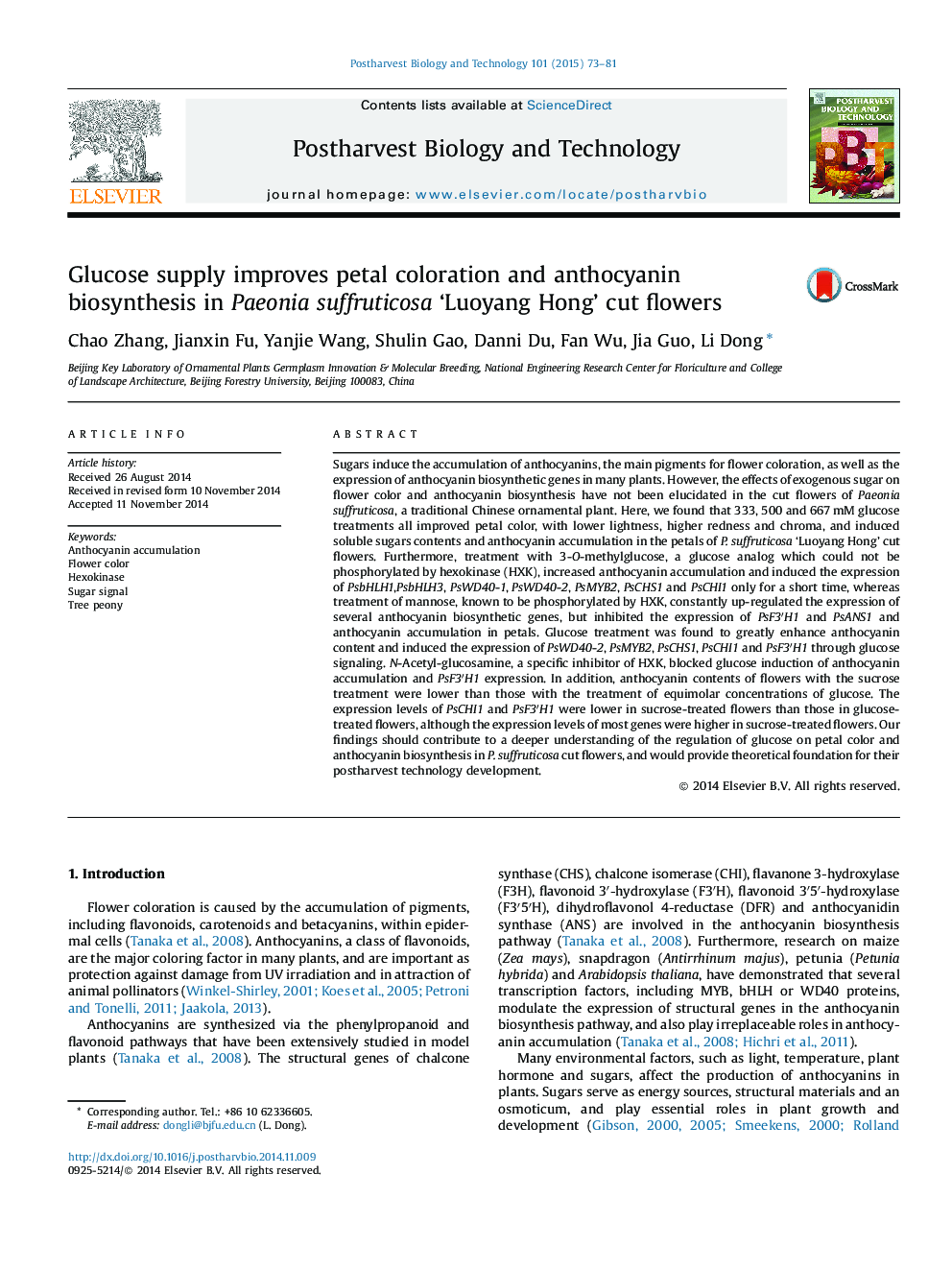| Article ID | Journal | Published Year | Pages | File Type |
|---|---|---|---|---|
| 4518044 | Postharvest Biology and Technology | 2015 | 9 Pages |
•Glucose supply improves petal color of tree peony ‘Luoyang Hong’ cut flowers.•Glucose induces anthocyanin biosynthesis in petals mainly via sugar signaling.•The PsF3′H1 gene plays an important role in glucose-induced anthocyanin biosynthesis.
Sugars induce the accumulation of anthocyanins, the main pigments for flower coloration, as well as the expression of anthocyanin biosynthetic genes in many plants. However, the effects of exogenous sugar on flower color and anthocyanin biosynthesis have not been elucidated in the cut flowers of Paeonia suffruticosa, a traditional Chinese ornamental plant. Here, we found that 333, 500 and 667 mM glucose treatments all improved petal color, with lower lightness, higher redness and chroma, and induced soluble sugars contents and anthocyanin accumulation in the petals of P. suffruticosa ‘Luoyang Hong’ cut flowers. Furthermore, treatment with 3-O-methylglucose, a glucose analog which could not be phosphorylated by hexokinase (HXK), increased anthocyanin accumulation and induced the expression of PsbHLH1, PsbHLH3, PsWD40-1, PsWD40-2, PsMYB2, PsCHS1 and PsCHI1 only for a short time, whereas treatment of mannose, known to be phosphorylated by HXK, constantly up-regulated the expression of several anthocyanin biosynthetic genes, but inhibited the expression of PsF3′H1 and PsANS1 and anthocyanin accumulation in petals. Glucose treatment was found to greatly enhance anthocyanin content and induced the expression of PsWD40-2, PsMYB2, PsCHS1, PsCHI1 and PsF3′H1 through glucose signaling. N-Acetyl-glucosamine, a specific inhibitor of HXK, blocked glucose induction of anthocyanin accumulation and PsF3′H1 expression. In addition, anthocyanin contents of flowers with the sucrose treatment were lower than those with the treatment of equimolar concentrations of glucose. The expression levels of PsCHI1 and PsF3′H1 were lower in sucrose-treated flowers than those in glucose-treated flowers, although the expression levels of most genes were higher in sucrose-treated flowers. Our findings should contribute to a deeper understanding of the regulation of glucose on petal color and anthocyanin biosynthesis in P. suffruticosa cut flowers, and would provide theoretical foundation for their postharvest technology development.
